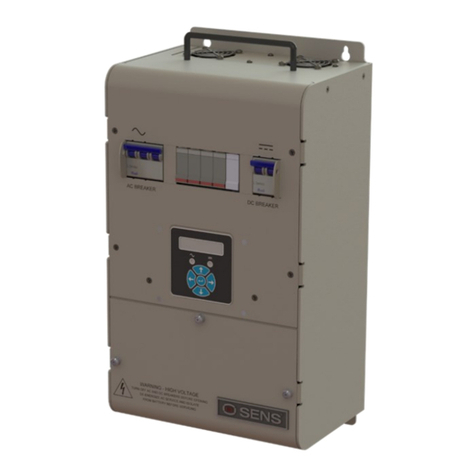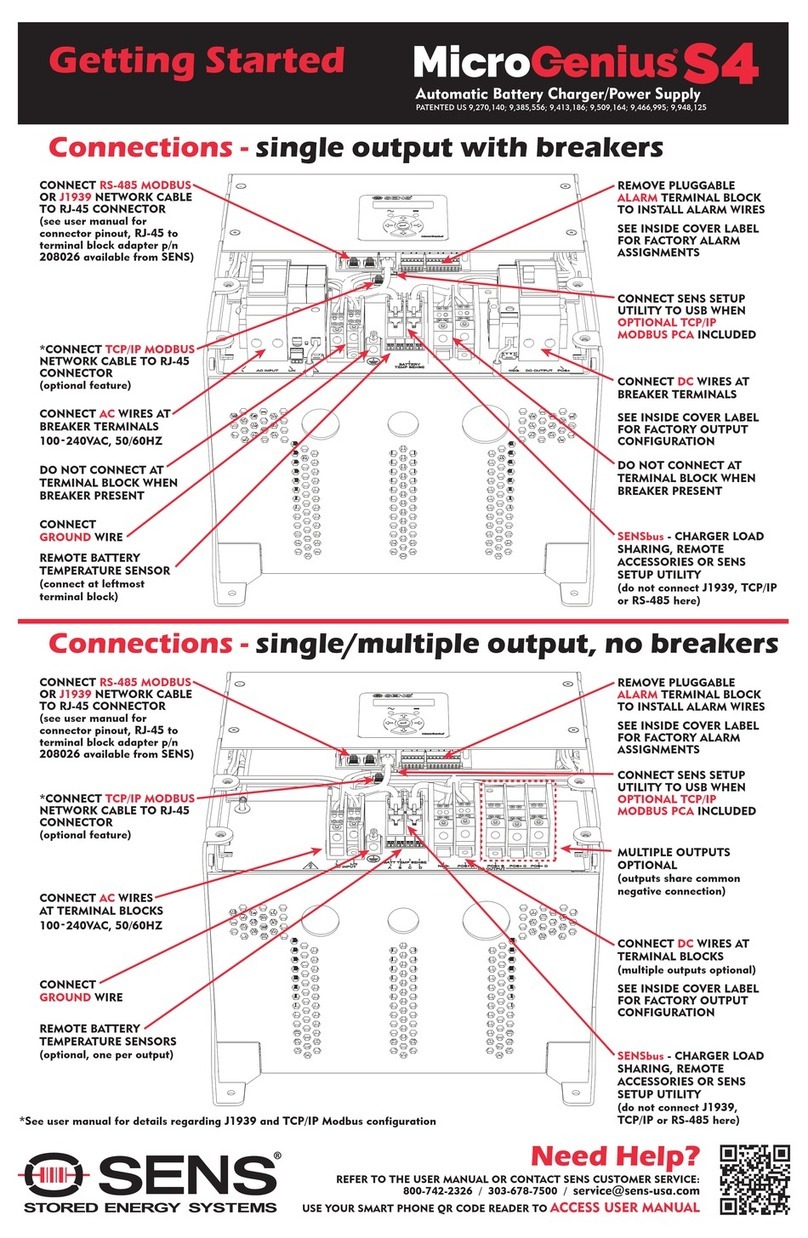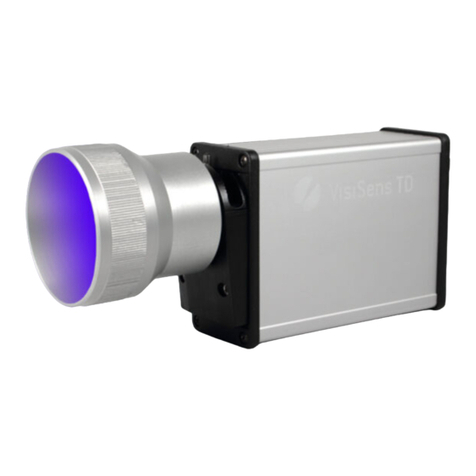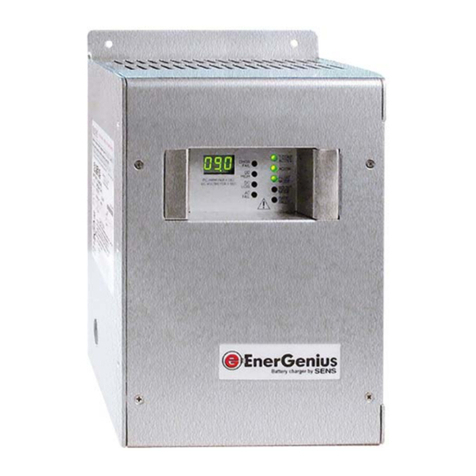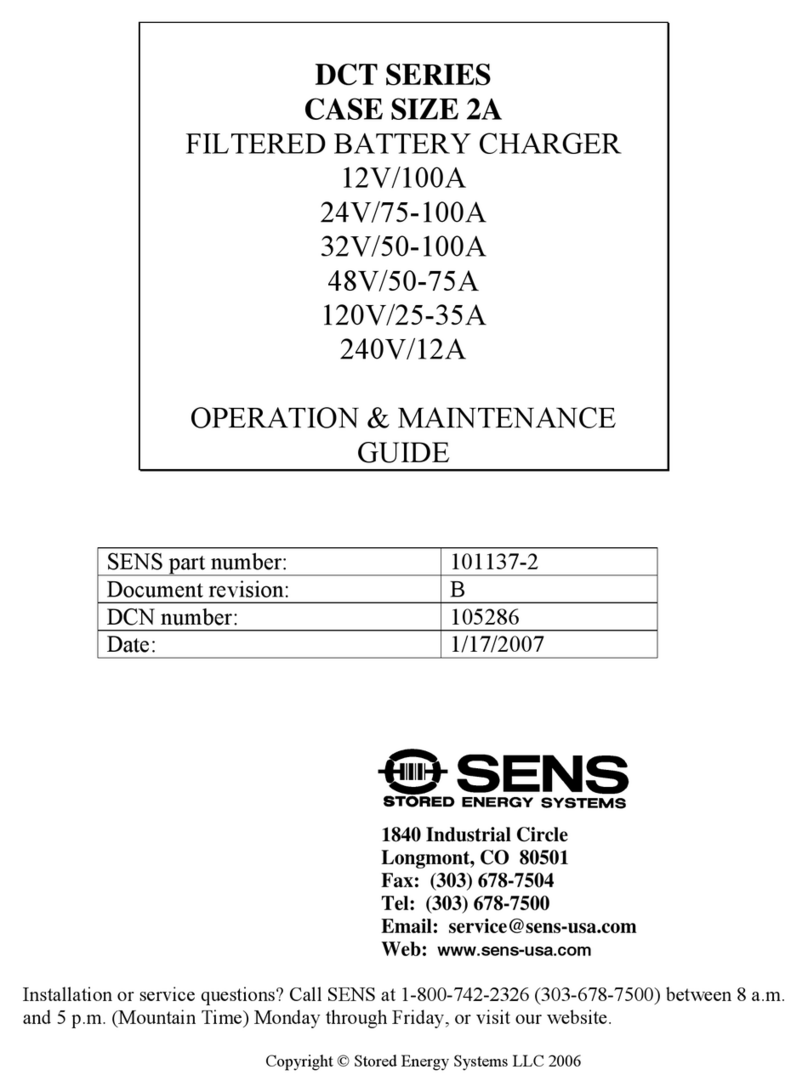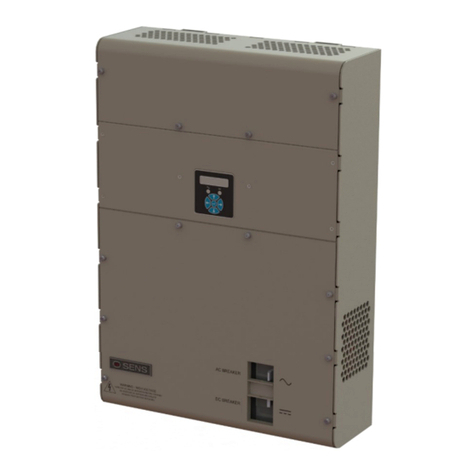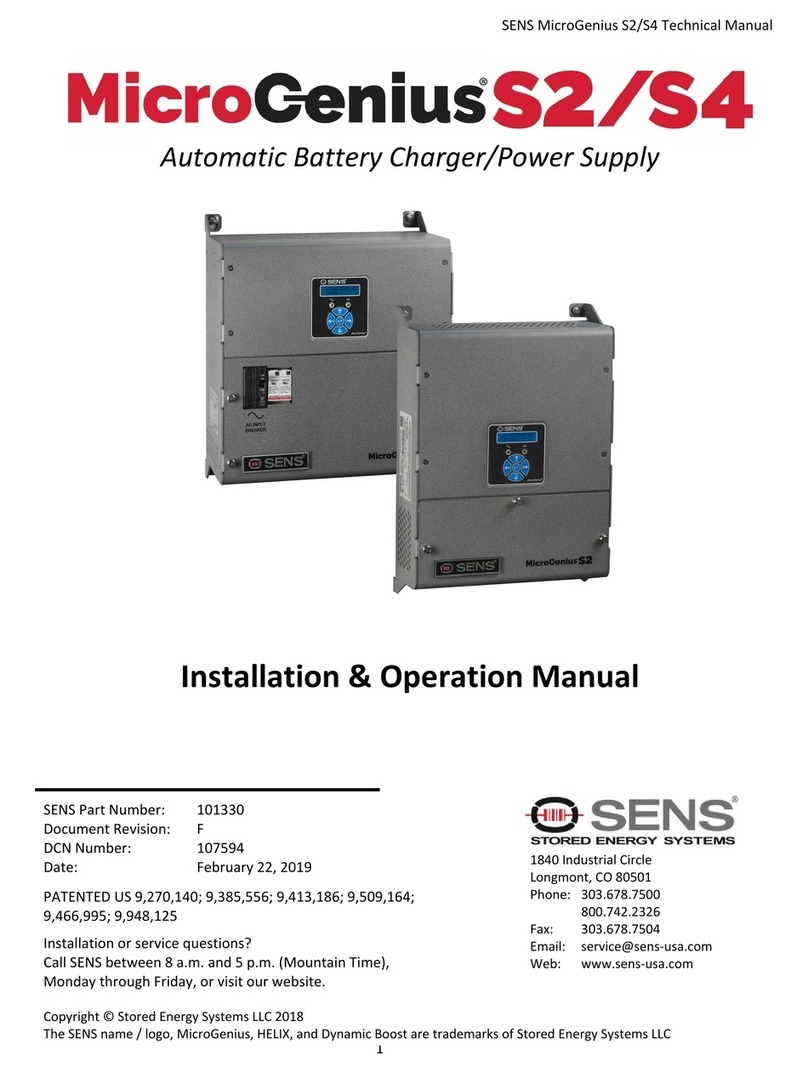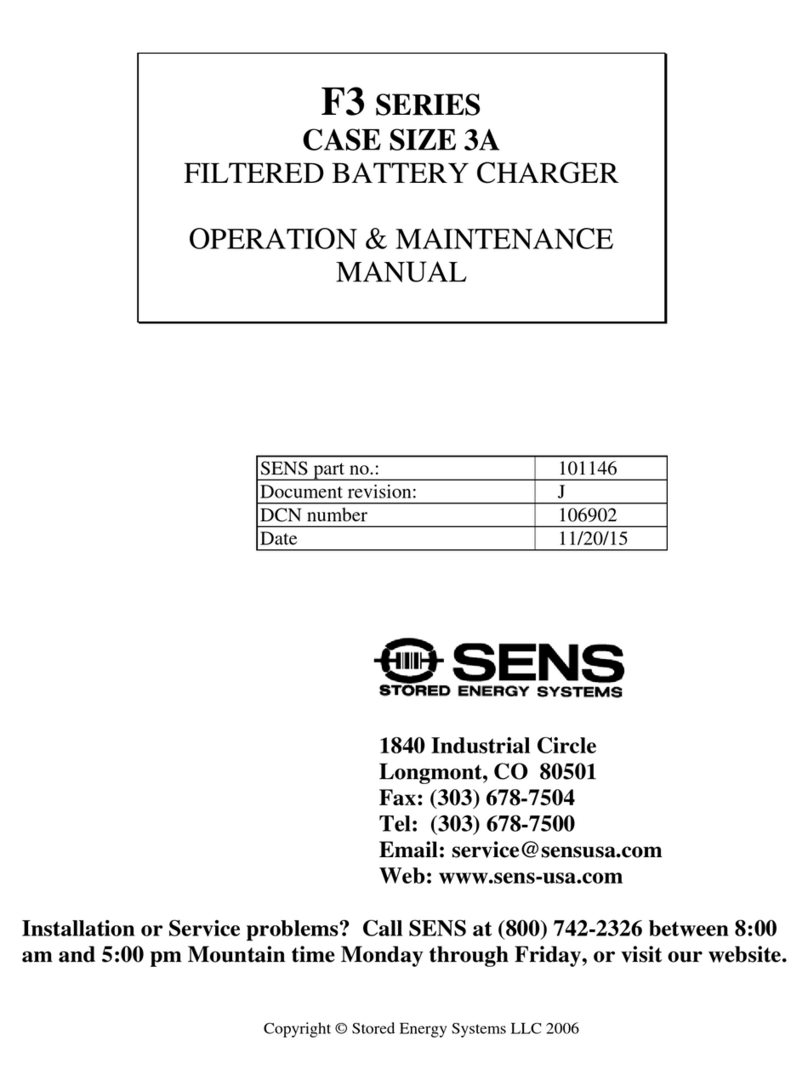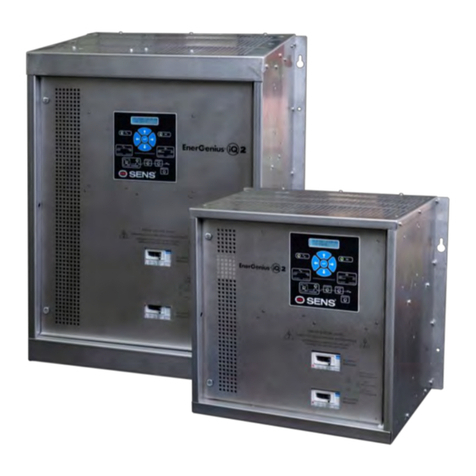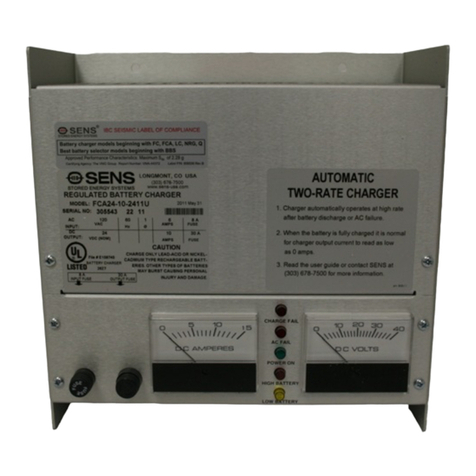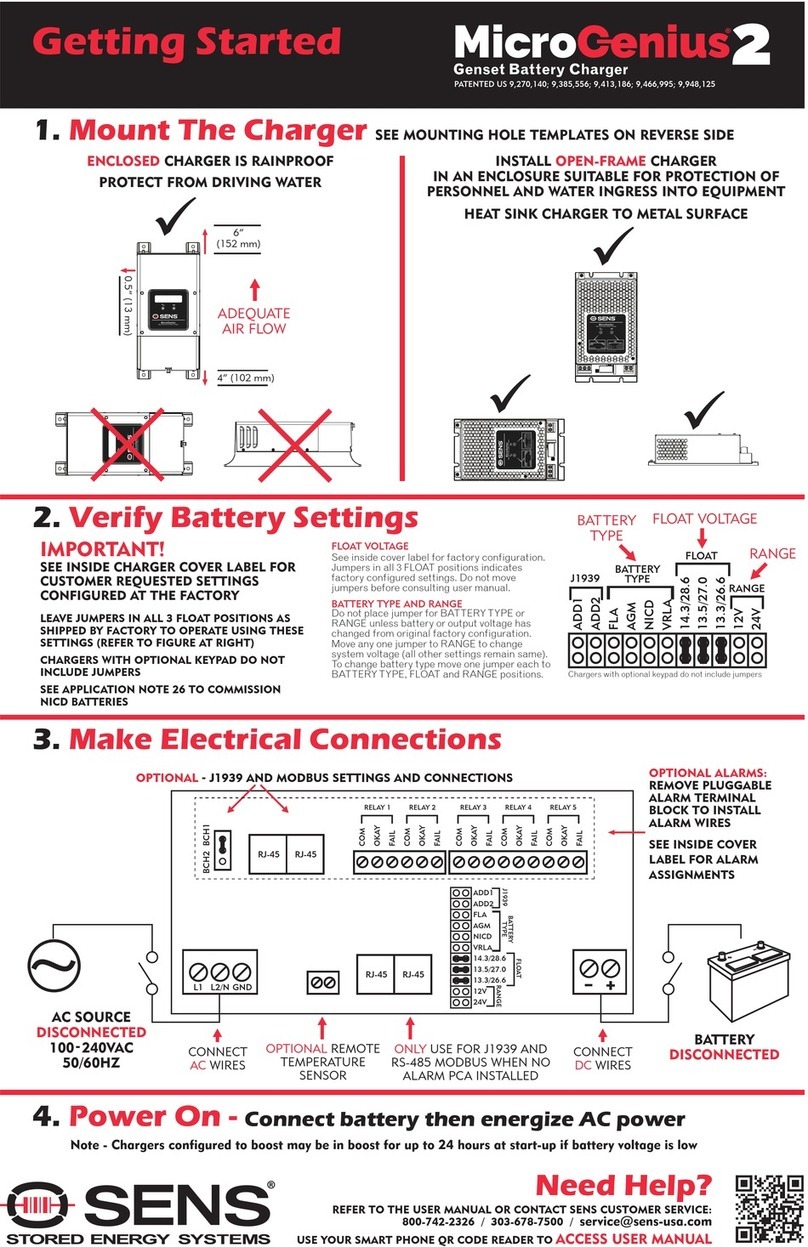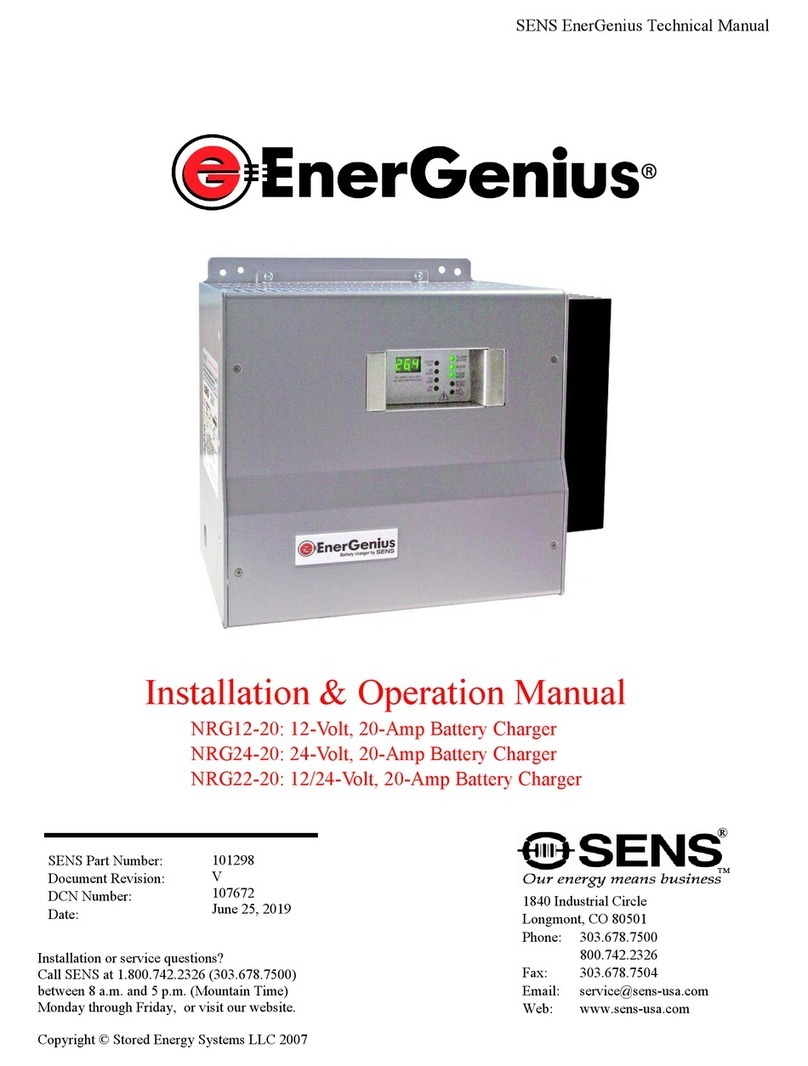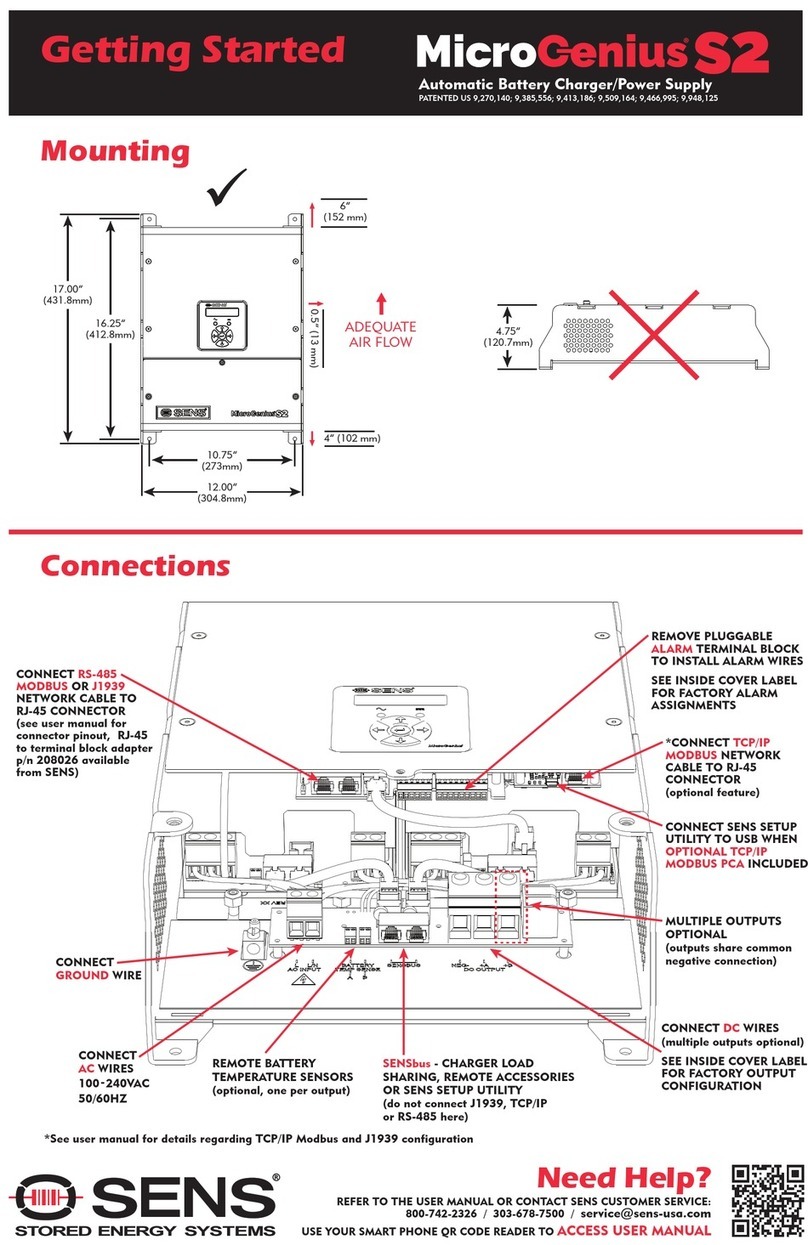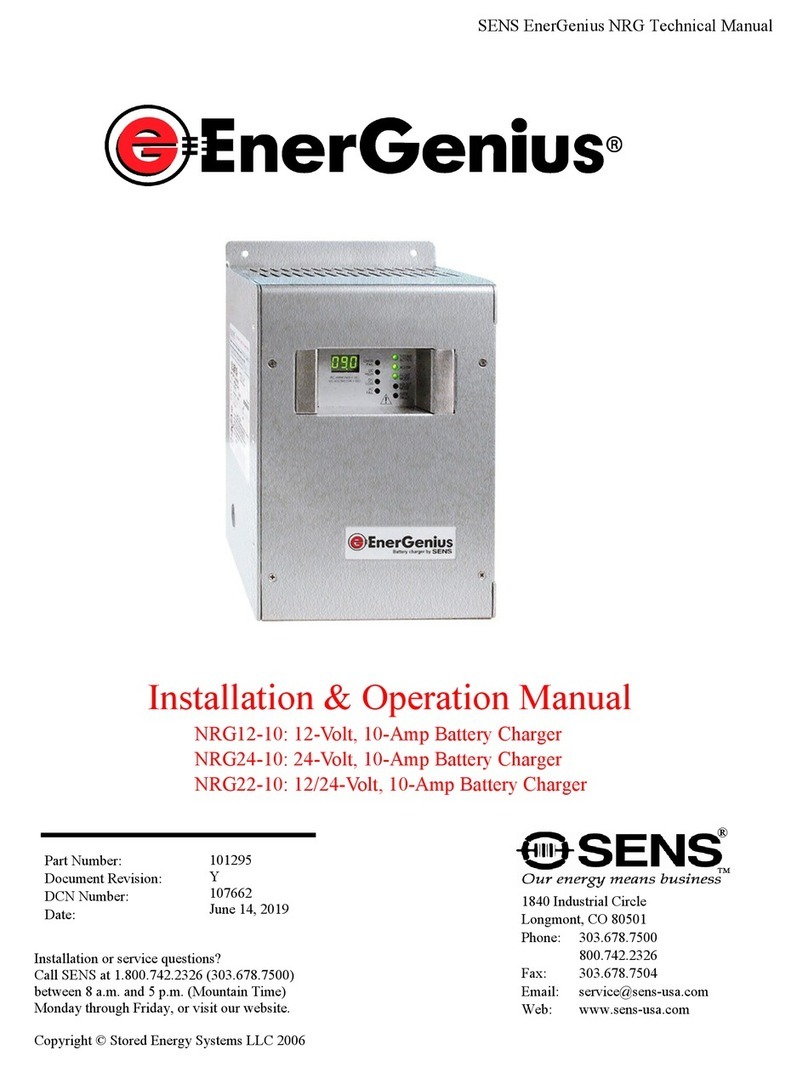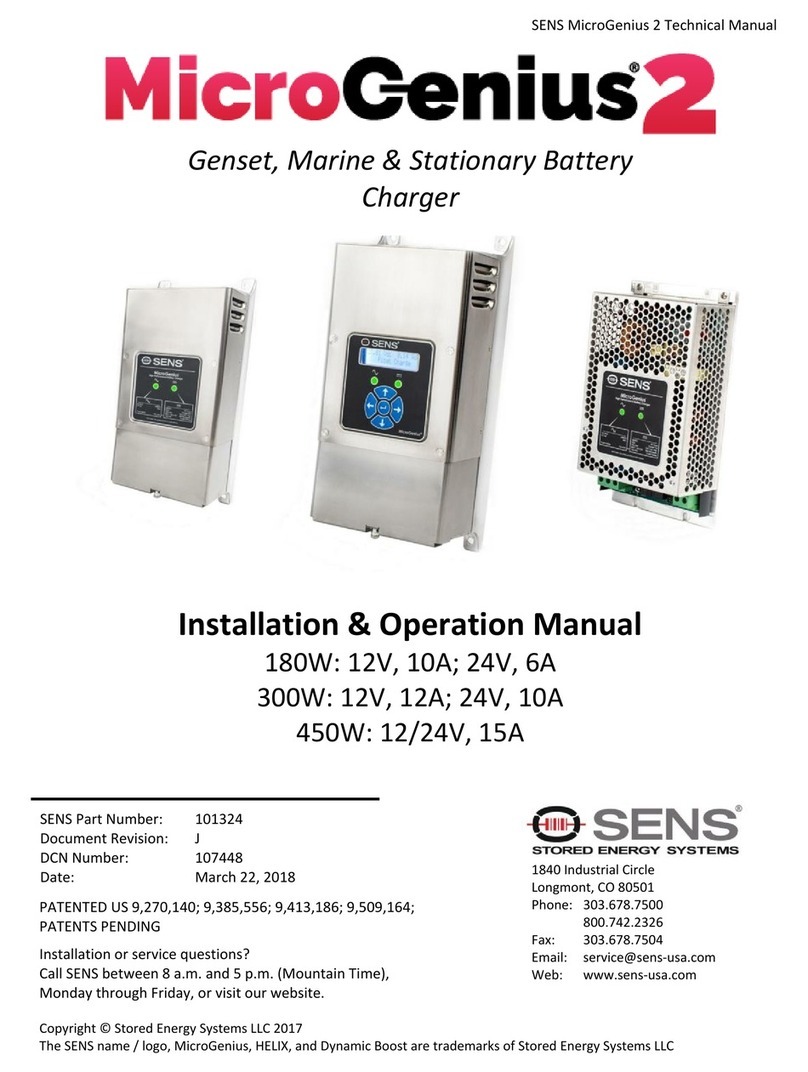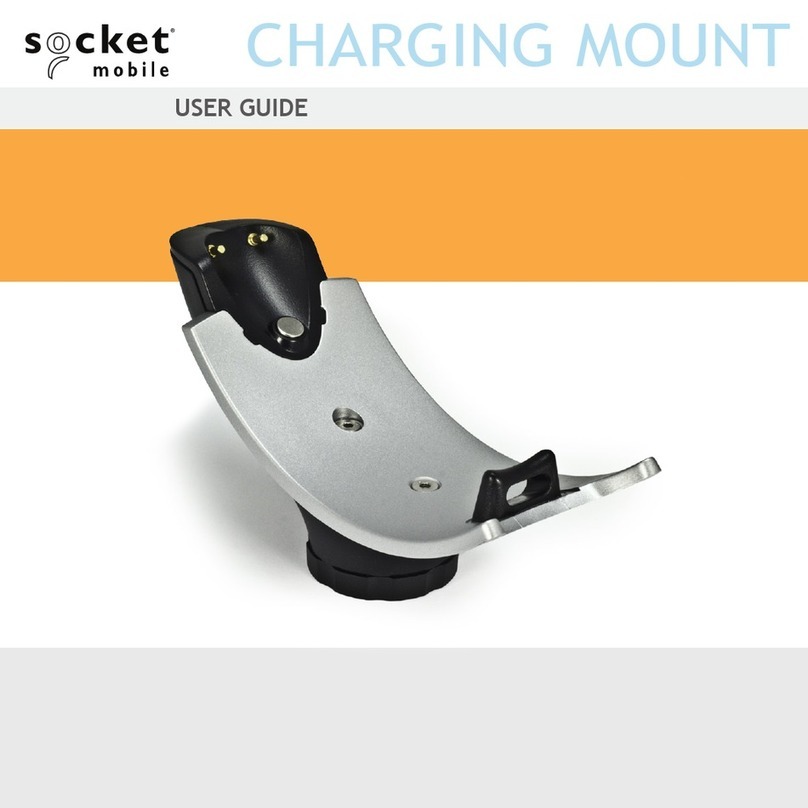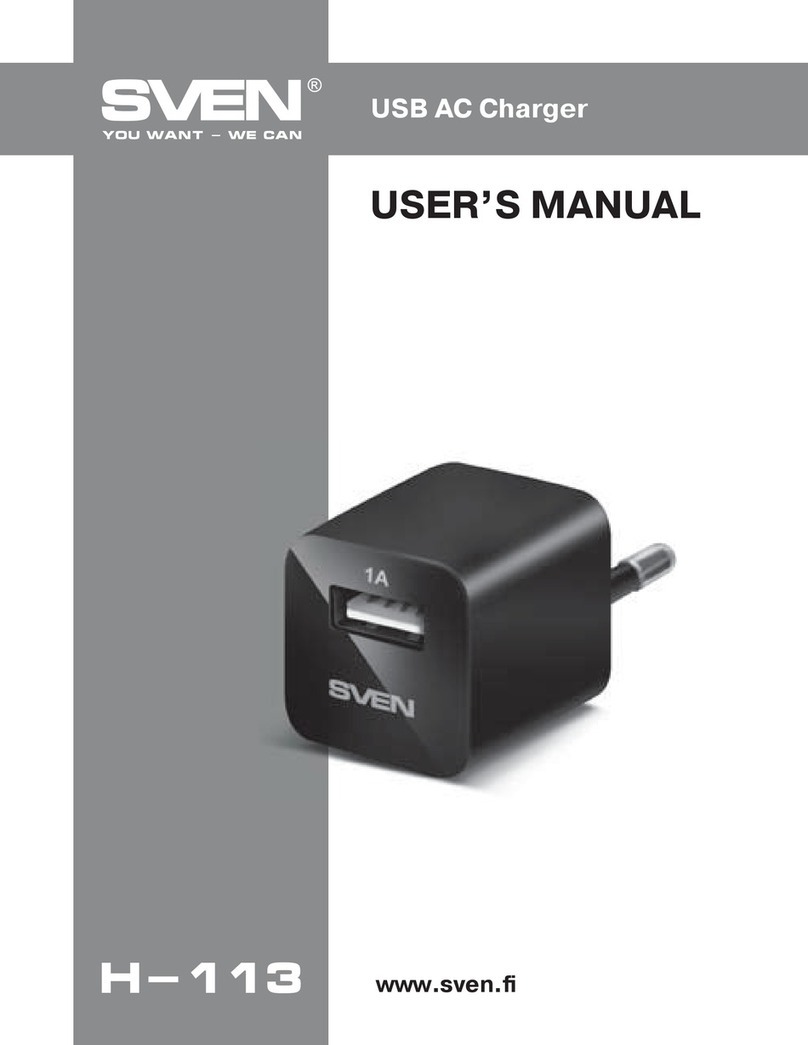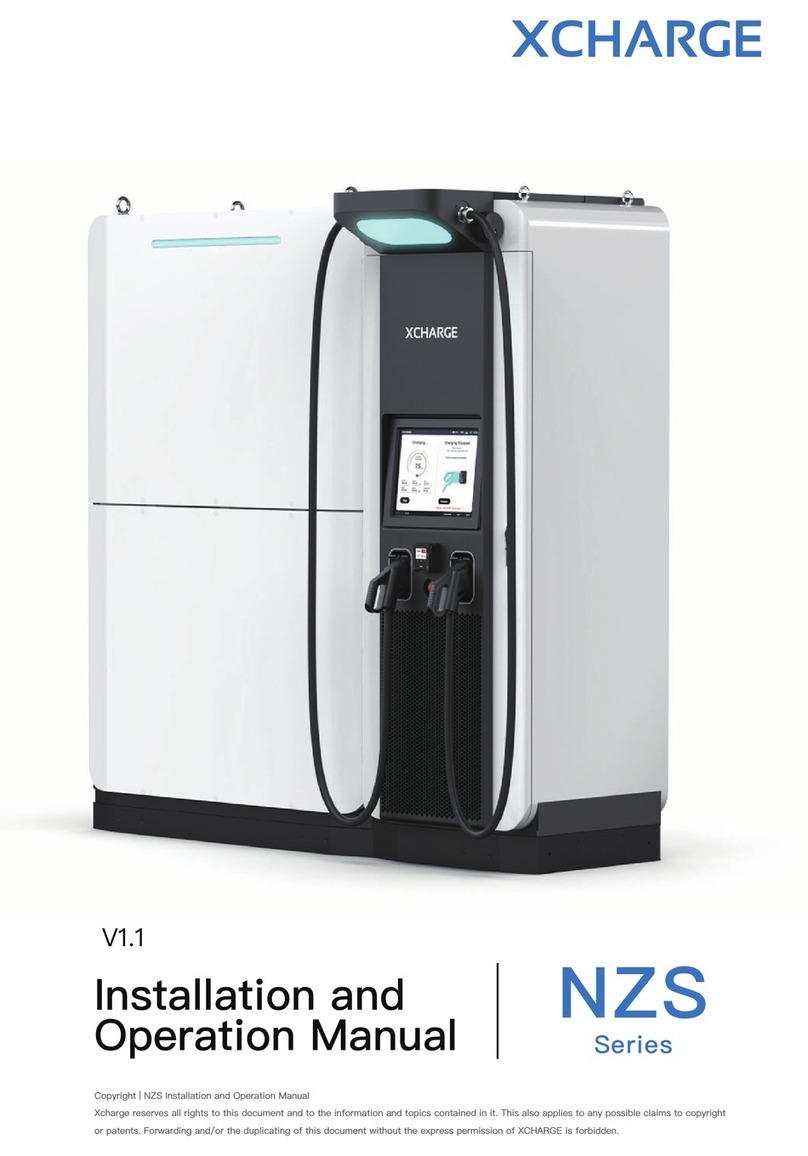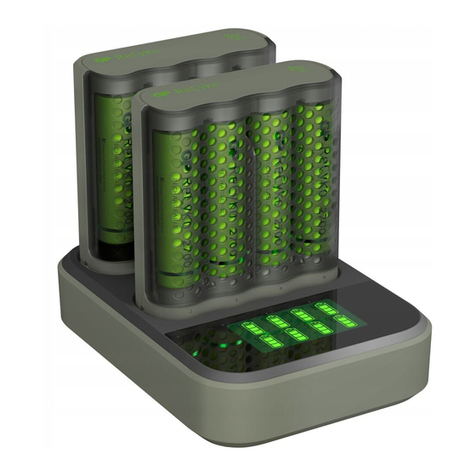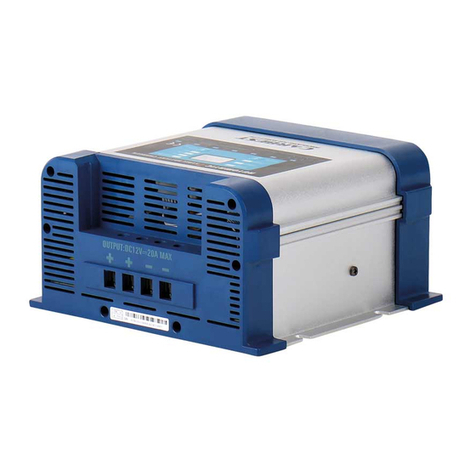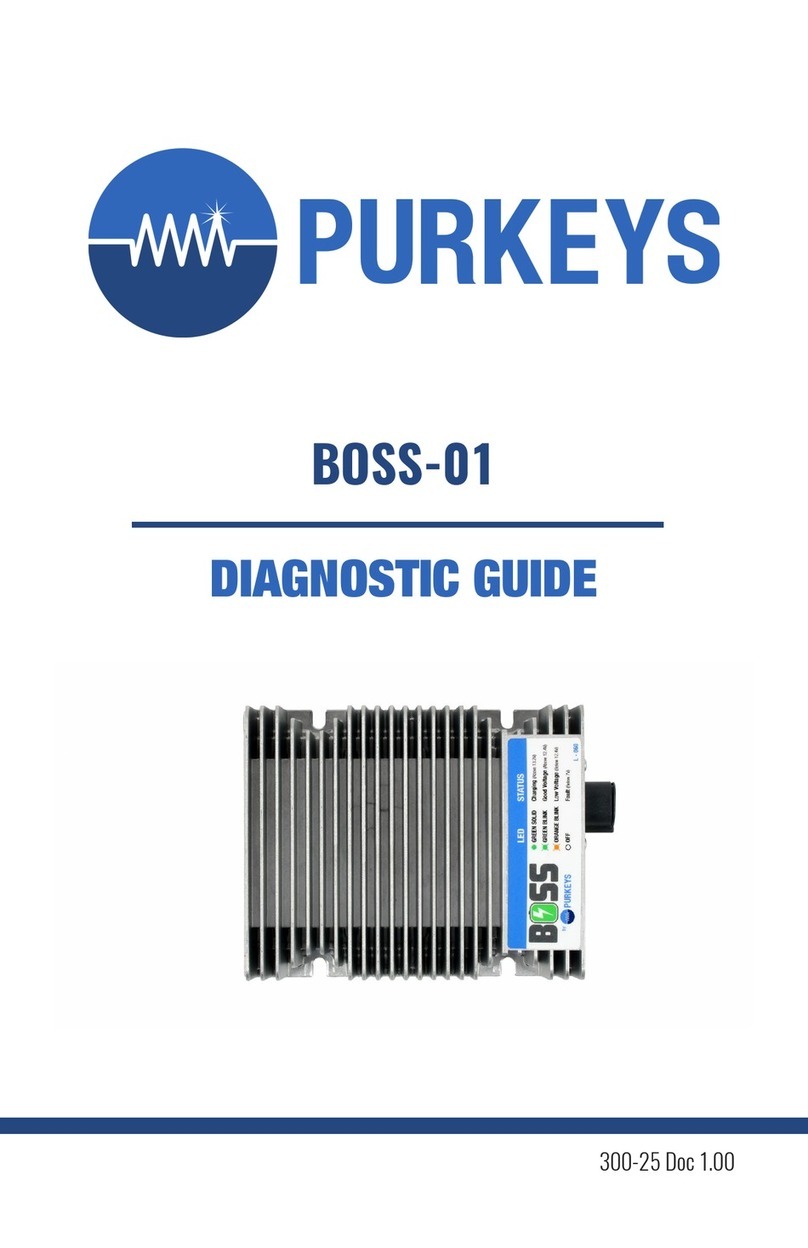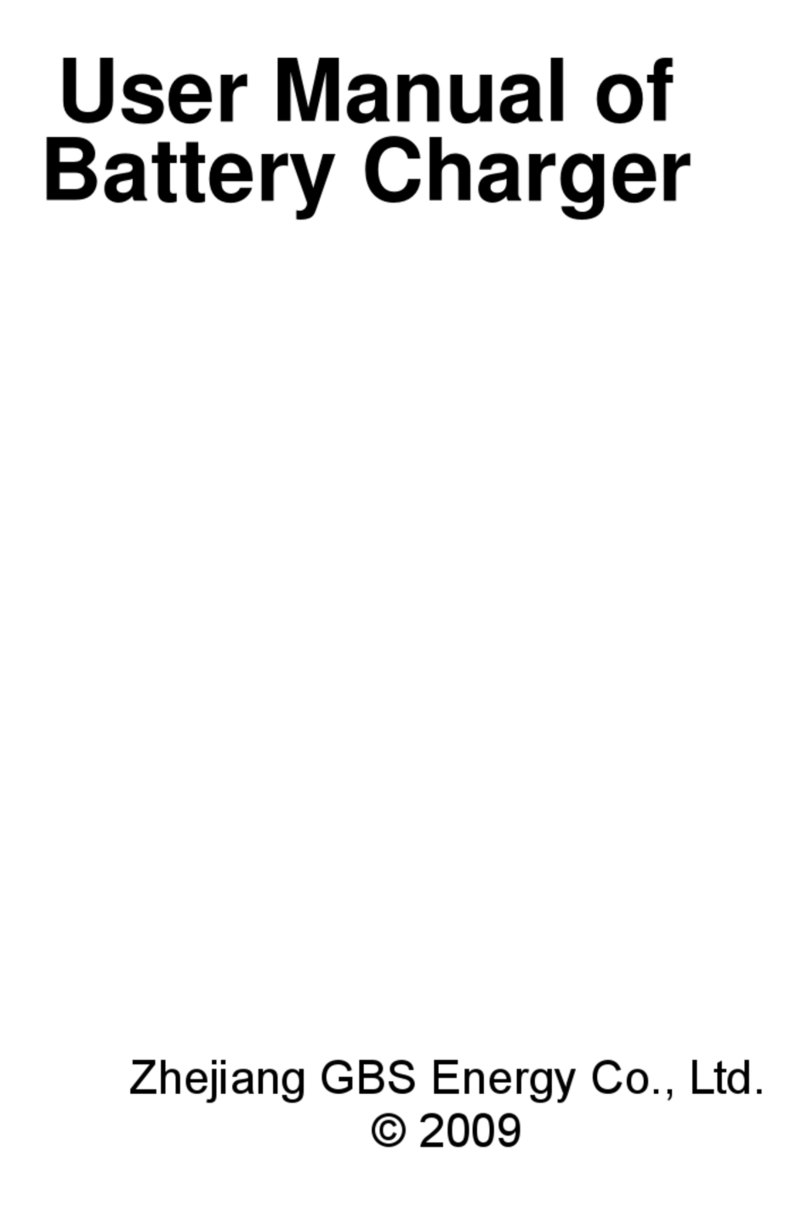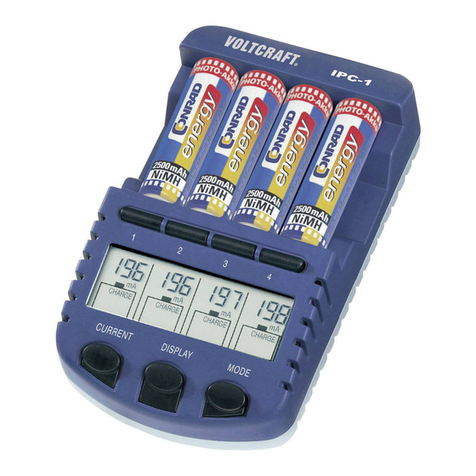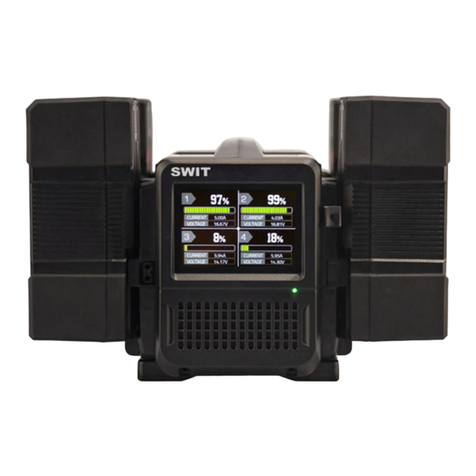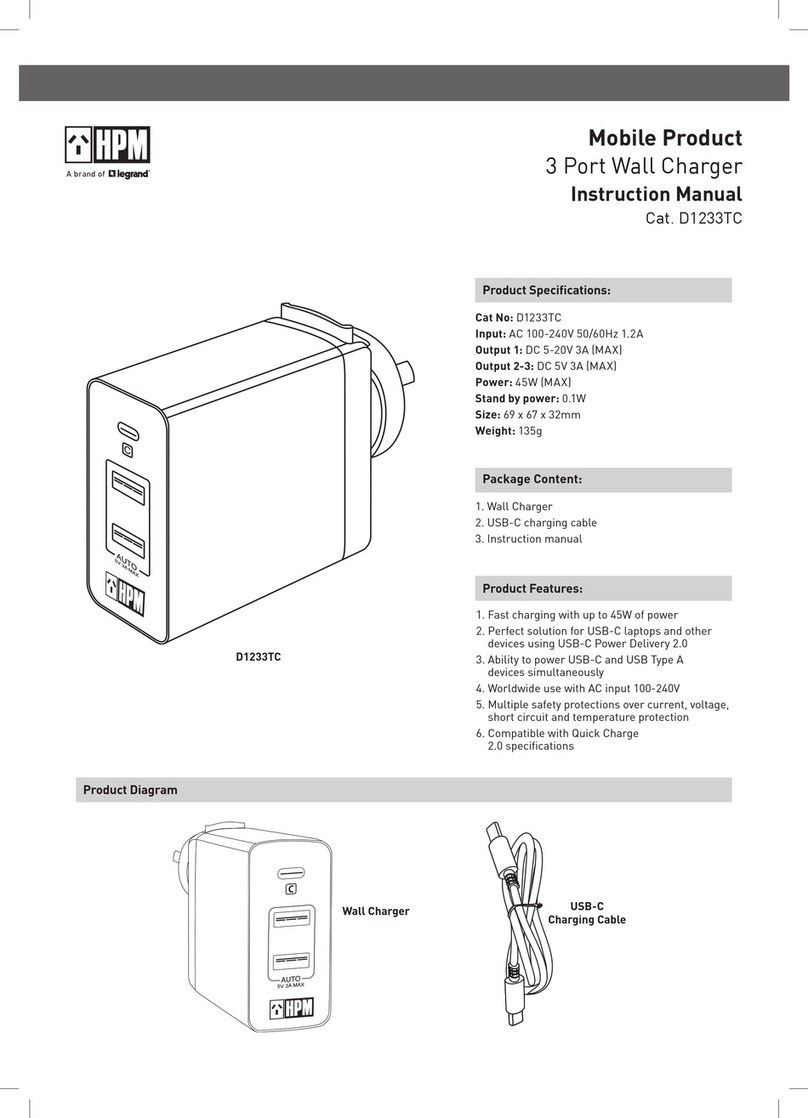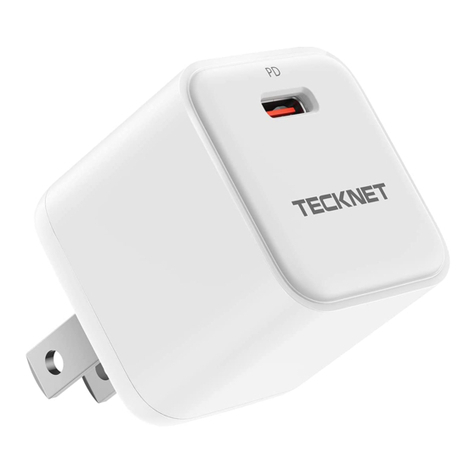
F3 Series Charger Manual
20
6.6 SCR Firing Circuits -Detail
Each power phase requires a firing circuit to fire the rectifying SCRs at precisely the right time for
rectification and output control. Since all firing circuits are identical, one phase will be discussed.
Ramp and Ramp Reset Circuits-Detail
The control transformer secondary voltage is rectified to a full wave pulsating wave form. The signal is
fed to an op-amp negative input where it is compared to a DC level of 450 mV (millivolts). When the
rectified voltage drops below this level, the output goes high to turn on a transistor. The collector
drops to near ground, discharging the capacitor across collector to emitter. As the rectified wave form
rises above 450 mV, the capacitor charges up thus creating a ramp that is synchronized with the phase
voltage.
Firing Pulse -Detail
At a comparison amplifier, the ramp signal is compared to the DC control bus voltage. When the ramp
signal rises above the DC control bus level, the output of the op-amp goes high. This turns on an npn
transistor which turns on the SCR firing circuit.
SCR Firing -Detail
During the half cycle when SCR anode is positive, a firing pulse will be generated and applied to a
MOS-FET. If the MOS-FET gate is positive biased, the positive anode voltage will flow through the
MOS-FET and out to the SCR gate, thus turning on the SCR. There are six pulsing circuits, two for
each phase. Each circuit has a blocking diode to avoid current flow through the MOS-FET during the
negative half cycle of the AC wave form.
6.7 Voltage and Current Control Loops-Detail
The loop control circuits consist of the voltage control circuit and the current control circuit. The DC
output must be carefully controlled and adjusted automatically for battery temperature variations to
prevent overcharging or undercharging the battery. Output current must be limited to prevent
excessive charge rate which can shorten battery life, as well as to protect the charger from overload
conditions.
NOTE: Refer to the “Special Function and Alarm Circuits”, later in this discussion, as they are an
integral part of the operation of the control loops.
Voltage Control -Detail
The voltage control amplifier compares the scaled down output voltage to a precision temperature
compensated reference voltage. When the output is higher than the reference level, the control
amplifier generates a DC control signal which is coupled to the control bus and in turn is fed to the
firing circuits to determine SCR firing angle. An increasing control bus voltage causes a delay in firing
and reduced output. As output is reduced to the correct voltage, the control bus voltage and firing
angle stabilize, and output remains constant.
Loop controls require a feedback signal from the function being controlled. Since the positive DC
output is the system ground or circuit common point, feedback is taken from the negative output. The
output is scaled down to approximately-5.5 VDC. Control loop stability is maintained by a type I
compensation loop.
Float/Boost /Autoboost -Detail
Chargers are equipped with two charging modes, float and boost. AUTOBOOST automatic equalize
operation is an option. Float mode charges the batteries up to their normal charged voltage, while
boost mode will charge the batteries over their normally charged voltage. The purpose is so that the
individual cells in the battery will equalize, thus improving battery performance. However, extended
time in boost mode can resultin battery damage due to overcharging and consequent electrolyte loss.
The float/boost/autoboost function is controlled either by a manual rotary switch or a timer. When the
timer is on, the charger is in boost mode. When time runs out the charger reverts back to float mode.
By changing the -5.5 VDC reference voltage different output voltages can be obtained. This is done




















